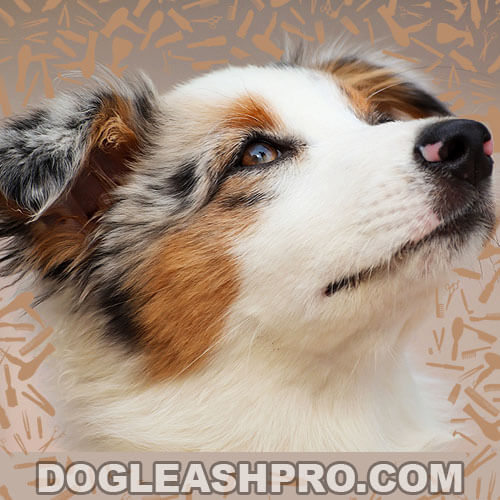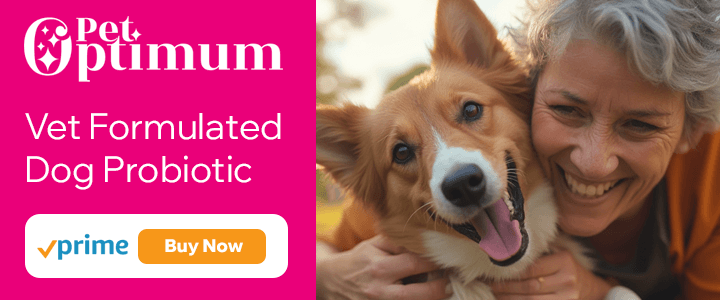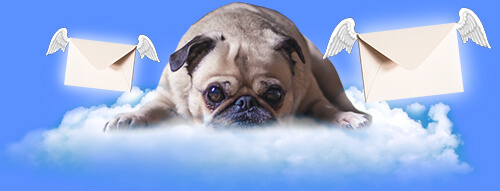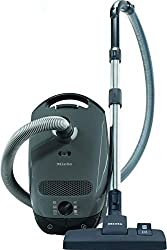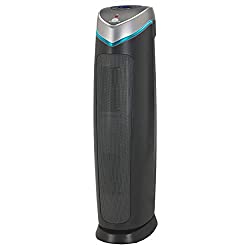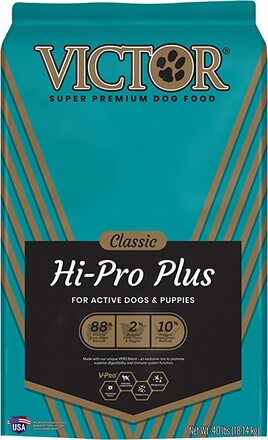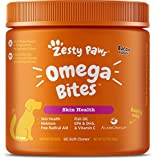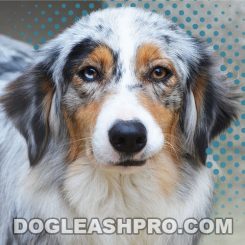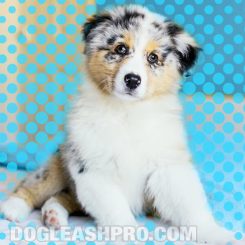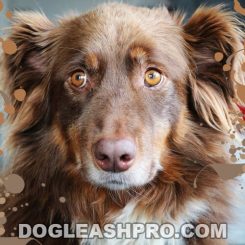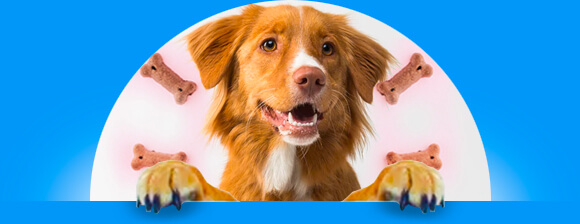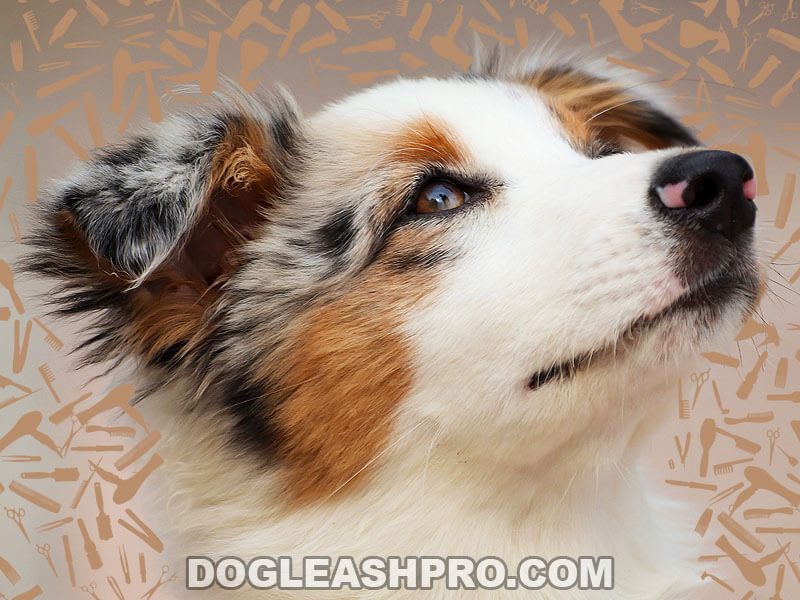
Do Australian Shepherds Shed? Yes, Australian Shepherds do shed all year round and will shed heavily twice a year during the spring and fall seasons. Their natural shedding is due to their double coat with the outercoat being a bit coarse and the undercoat being a bit dense. Along with their shedding, Aussies will also shed dander and saliva which can trigger allergies in those who are sensitive to pet allergies.
Do Australian Shepherds Shed? That’s a question we get asked quite often. Australian Shepherds are one of the most popular canine companion in North America. Many prospective owners want to know more about their caretaking requirements, especially shedding details.
If your Google history contains queries like “How much do Australian Shepherds Shed?” you’re in the right place! This article will address all your shedding-related questions for the Australian Shepherds. Be it coat types, shedding levels, or tips to control shedding, we’ve got it all covered! All you need to do is stick with us to learn if Australian Shepherds meet your criteria for a furry companion.
Table of Contents
Do Australian Shepherd Shed?
Yes, the Australian Shepherd shed quite a bit. Like most double-coated canines, the Aussie is not hypoallergenic and experiences heavy shedding episodes at least twice a year.
That’s not including the regular shedding Australian Shepherds go through throughout the year due to the completion of the hair cycle.
Even the non Shedding Australian Shepherd type (Short-hair Aussies) sheds throughout the year and experience seasonal shedding.
Do Australian Shepherds Shed a lot?
So, do Australian Shepherd Shed a lot? The answer is yes because Aussies are high shedders. You can expect them to shed all year round with heavier shedding during the spring and fall seasons.
However, you can help your shedding Australian Shepherd by keeping a strict grooming schedule and ensuring a healthy diet to reduce the effects of hair fall.
How much do Australian Shepherds Shed?
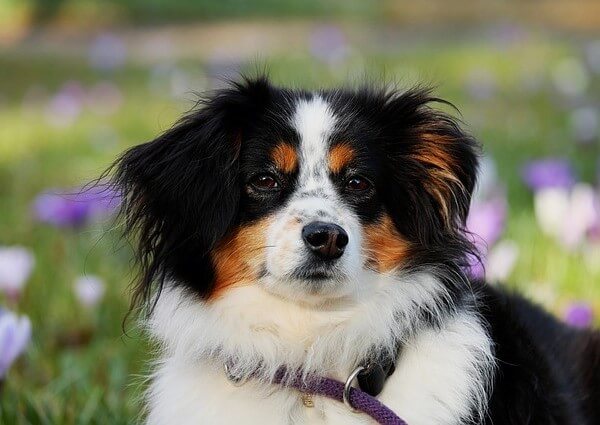
How much Does Australian Shepherd Shed? Let’s put it this way, Australian Shepherds are among the dog breeds that experience the heaviest shedding.
To understand why, it’s helpful to understand how their shedding cycle works.
Aussies go through heavy shedding in the spring and fall seasons. This is nature’s way of ensuring your furry pal is ready to face the changing seasons.
The Aussie’s coat consists of a topcoat and an undercoat. The topcoat includes wavy or straight long hair.
On the other hand, the undercoat is a dense and wooly covering designed to insulate the canine during the colder months. This helps them adapt to varying temperatures.
An Aussie dog shed the most during the fall and spring and first-time dog parents who may not be aware may become quite alarmed. However, there’s no need to worry.
The good news is that shedding can be managed if you know how to groom your canine friends properly. We’ve provided more information on this below.
You may be interested in: Are Australian Shepherds Good With Kids?
How bad do Australian Shepherds Shed?
Many prospective canine parents ask, “Do Australian Shepherds Shed bad?”
The truth is, there’s no such thing as good or bad when it comes to shedding. Animals shed fur, just as humans shed dead skin cells or dander.
In short, it’s a physiological function that you have no control over. Aussies typically go through two heavy shedding episodes every year.
There are many dog breeds in the world, and some of the most favored ones, including Australian Shepherds, are high shedders. Nonetheless, that doesn’t affect their popularity. Many dog parents are apprehensive about bringing home a double-coated dog because of shedding concerns.
Thankfully, canine enthusiasts can avoid most allergy problems linked to pet dander by taking certain precautions and paying special care to their furry friend’s grooming routine.
Brushing and grooming therapy can go a long way in controlling your pet’s hair fall.
Australian Shepherd Shedding level
The Australian Shepherd Shed level is high. These canines have an overall thick coat of fur and sheds hair from the outer coat and the undercoat.
Generally, dog owners find it easier to clean up the hair from the outer coat because of its slightly coarse texture. Undercoat hair is soft and wooly, making it more likely to stick to fabrics or fibers.
Australian Shepherd Shedding season
As stated earlier, Aussies shed heaviest during the spring and fall seasons. Therefore, you can expect your Australian Shepherd to shed heavily from March to May and again from September to November.
Are Australian Shepherds Hypoallergenic?
No, Australian Shepherds are not hypoallergenic. In the canine-centric world, the term ‘hypoallergenic’ is used for dog breeds suitable for pet owners with allergies because they produce less dander.
Canines with curly coat are sometimes described as hypoallergenic because their curly coat texture can trap loose fur, dander, and saliva.
Since Aussies have a wavy or straight long coat, it doesn’t help to trap any loose fur, dander, and saliva.
Dander is best described as flakes of skin or dead skin cells in animal fur. It’s one of the top allergens and can trigger allergy attacks in people with canine allergies.
Since high-shedding dogs lose more hair, they also tend to shed more dander.
However, pet parents should note that the risk of allergies with high-shedders, such as Australian Shepherds, can be noticeably reduced by adopting the right grooming strategies.
This includes using the right dog shampoos to help minimize shedding and utilizing slicker brushes and de-shedding tools.
WANT MORE INFORMATION? Check out Are Australian Shepherds Hypoallergenic? 15 Tips To Reduce Dog Allergy Around Your Home
Do Australian Shepherd puppies Shed?
Yes, Australian Shepherd puppies do shed and will shed their ‘puppy’ fur. The process is slow and gradual, as it helps the fur babies grow their signature double coat. Your puppy’s fur might look thin or patchy during this time, but that is completely natural.
So when do Australian Shepherd puppies shed their puppy coat? Let’s find out next.
When Do Aussies Shed their puppy coat?
Aussies can start shedding their puppy coat anytime between (3) three to (6) six months. The time frame can vary from puppy to puppy.
It’s important to note that when Aussie puppies shed their puppy coat, the process can take a few months to complete.
When Do Aussies get their full coat?
Australian Shepherds grow their adult or full coat by the time they are (1) one year of age. This timeframe might differ from canine to canine by a month or so.
Aussie show coat vs working coat
Aussie show dogs and working dogs differ in that Aussie show dogs need to have impeccable-looking coats. Show dogs are also judged on their physical appearance, meaning these canines need to have both a solid build and a well-kept coat.
Since Aussies have double coats, their fur is susceptible to tangles or becoming matted.
Aussie owners with show dogs need to be vigilant about their pet’s grooming regimen, so their canine’s fur looks as healthy and sleek as possible.
Australian Shepherd coat types and colors
If you’re curious about the Australian Shepherd coat colors and types, you might want to pay attention here.
Australian Shepherd coats are typically the same, no matter the canine’s purpose. The breed is renowned for his double coat with medium-length hair.
The outer Aussie coats can be straight or wavy with a coarse texture. Conversely, the undercoat is soft and dense. Another distinguishing factor of the Aussie coat is that the back of their forelegs is slightly feathered.
The details about the breed’s coat colors are listed below.
Blue Merle
The Blue Merle Australian Shepherds have grey, blue, black, and white fur. Merle is another term for marbled, which is why you can expect your blue merle Aussie to have light and dark-colored hair mixed to create a stunning, blended pattern.
Black
Australian Shepherds with only one hue are rare because a recessive gene influences solid color in this breed. This makes Black Aussies pretty rare.
As the name suggests, these canines are completely raven-colored. It’s not uncommon to find a patch or two of light tan or white, even in Black Aussies.
Black Australian Shepherds can have light to dark brown eyes.
Red Merle
Red merle Aussies have the merle gene, but their colors differ. These canines have red fur with white, tan, or copper color patches that create a beautiful sandstone-like effect.
Red
Solid Red Australian Shepherds are likely rarer than their black counterparts. Nonetheless, red in this breed can appear as a chestnut, ruby, auburn, or a beautiful cinnamon shade.
Long hair Australian Shepherd
An Australian Shepherd bred as a show dog can sometimes be called a long-haired Australian Shepherd. A long haired Aussie will typically inherit a luscious coat and well-built frame from their purebred or champion parents.
Aussie short hair
The Short-haired Aussie (also known as smooth coat Australian Shepherd) is somewhat controversial. That’s because these canines have sleeker-looking coats compared to regular Australian Shepherds.
Some dog owners claim the Aussie dog short hair isn’t a pedigree, while others claim they’re purebred. One thing is for sure and that is short-hair Aussies don’t differ much from others, except in coat length. Even short haired Australian Shepherd shedding is much the same, with heavier seasonal shedding twice a year.
Are Australian Shepherds double coated?
Do Australian Shepherds have a double coat? Absolutely yes, they do. The Australian Shepherd double coat consists of two fur layers. The top coat is medium-length and somewhat rough-textured. The undercoat is soft, dense, and water-resistant.
When Do Australian Shepherds Shed?
If you’ve been wondering, “When Do Aussies Shed?” the answer is that Aussies shed all year round and will have heavy shedding two times a year, from March to April and from September to November.
When Do Australian Shepherds Shed the most?
Australian Shepherds shed the most during the spring and fall seasons.
How often Do Australian Shepherds Shed?
Aussies have two heavy shedding seasons (during the spring and fall), and they also shed moderately throughout the year as the cycle of your pet’s fur moves forward.
When Do Australian Shepherds start Shedding?
Australian Shepherds start shedding at the age of 4 to 6 months. That’s when they start losing their puppy coat to make for their two-layered fur. Once the pups are mature, they will shed heavily twice a year, along with minimal regular shedding.
Do Australian Shepherds need winter coats?
Australian Shepherds can handle cold temperatures well, thanks to their fluffy double coats. However, dog parents might want to look into getting their furry companions a winter coat if they notice signs of hypothermia, such as delayed reflexes, dilated pupils, and lethargy.
It’s also a good idea to get your Aussie a suitable winter raincoat if it normally rains during the winter where you live.
17 Easy Australian Shepherd Shedding Tips
If you’ve got your heart set on an Australian Shepherd as your very own furry companion, there’s no need to stress out about their high shedding tendencies.
That’s because this section will walk you through easy-to-implement tips to control their heavy sheds. Ready? Let’s go!
1. Brush your Australian Shepherd frequently
One of the easiest ways to control your Aussie’s shedding is to brush him on a daily basis. With a slicker brush, start combing from your canine’s head, and work down his body. You should lift the part of fur you want to comb and brush the area from root to tip.
The entire process should take you about twenty minutes. If you’re busy or short on time, you can brush your Aussie at least three times a week using the same technique.
During normal shedding all year round, you should use a slicker brush to loosen dirt and debris and then go in with a raking brush to remove matted or loose undercoat hair. Doing so will help control your Aussie’s shedding to quite an extent.
If your canine is shedding more than usual outside the shedding season, it’s best to have your furry pal checked by a veterinarian. Hormonal imbalances can result in health concerns like hypothyroidism and increased hair loss.
RECOMMENDED: Dog Losing Hair Around Eyes? (9 Top Reasons + What To Do)
2. The right tools matter!
Thus far, we’ve mentioned the slicker brush and raking tool. But there should be more to your grooming kit. Using the right kind of brush can make your job so much easier.
Here’s how:
Slicker brush
The slicker brush is a type of brush that is perfect for medium to long-coated canines. Slicker brushes are specifically designed to loosen dirt, dander, and tangles from your pet’s coat. They include wire bristles placed close together for maximum effect.
However, dog owners must be careful when using the slicker brush to avoid damaging their furbabies’ skin.
Raking Comb
Raking tools or combs have widely-spaced tine facing downwards. This grooming tool is perfect for removing loose hair from your pet’s undercoat. Be gentle and careful while using raking combs to avoid cuts and injuries.
Deshedding Comb
Deshedding combs, like the famous FURminator de-shedding tool line, are equipped with a blade. These combs are extremely handy during heavier shedding seasons to reduce your Aussie’s shedding output. It’s a must-have for canines with double coats like the Australian Shepherds.
Bristle Brush
Bristle brushes are ideal for combating top coat shedding. Besides that, they are made from natural fibers and help distribute the natural oil through your canine’s skin and fur. A bristle brush can help your pup look well-kempt and smooth.
3. Invest in a powerful vacuum cleaner
It’s best to note that your Aussie will shed fur on your carpet, sofa set, bed, and other areas of the house, despite a regular brushing schedule. The good news is you can keep your home clean and dander-safe with the help of a robust vacuum cleaner like the Miele Vacuum Cleaner, which is durable, quiet, and powerful.
Consumers have various products to choose from, thanks to plenty of competition in the vacuum industry. You can opt for a vacuum stick or the bagged canister vacuum with the long pipe. Additionally, dog parents will be happy to hear there are plenty of vacuums on the market that are highly efficient when it comes to sucking up pet hair and dander.
With our two double-coated dogs at home, we trust the Miele vacuum cleaner because it can seamlessly transition between hardwood floor and carpet, and with the help of the different crevice tools provided, you can easily maneuver hard-to-reach places.
If you’re not short on space, canister vacuums with a carpet or sofa cleaning option can be highly useful. These come with dry and wet options that help you wash your floor coverings with minimum fuss.
4. Use a robot vacuum
If you’re short on time, you can get a robot vacuum instead. The robot vacuum is great for folks who have busy schedules and do not have much time for daily chores. Moreover, robot vacuums don’t take much storage space and can be scheduled to clean throughout the home that receives the most traffic.
But robot vacuums can be a little problematic in a pet-friendly household. There have been reports of dogs getting their tails caught in automatic vacuums. Besides, if your canine isn’t house-trained, a robot vacuum might create a bigger mess if it runs through dog poop.
5. Use an air purifier with HEPA filter
HEPA filter in air purifier is an acronym for ‘high-efficiency particulate air’ filter. These filters can remove 99.9% of air pollutants, including dust, mold, pollen, and other types of airborne impurities. When it comes to households with pets, HEPA filters can also eliminate pet dander, a common allergy trigger.
HEPA air filters come in many shapes and sizes. Their efficiency depends on capacity. For example, you’ll have to ensure the filter you’re buying is adequate according to the room size. It’s not necessary to place a filter in every room of your house. Instead, focus on rooms where you and your family spend most of your time.
We trust the GermGuardian True HEPA Filter Air Purifier for Home and Pets with our two dogs at home. Within just a day of having this air purifier, everyone in our family noticed a huge difference in the air quality inside our home.
My Labrador was no longer scratching her skin. What’s great about the air purifier is that it comes with a 5-year warranty.
6. Buy lint rollers in bulk
One of the biggest drawbacks of canine shedding is how the fur sticks to any type of fabric. And, before you know it, your dog’s hair is all over your work clothes and your favorite pajamas. That’s where lint rollers can help you save time and effort.
Lint rollers are perfect for picking up fur from your clothes with a minimum of fuss. It’s a must-have necessity in all dog-friendly households, especially during shedding season. You can stock up on lint rollers in bulk to save up money.
If you’re not too comfortable with the wasteful aspect of sticky lint rollers, you can always buy reusable micro-bristle or rubber lint rollers that work just as well.
7. Avoid bathing your Australian Shepherds too often
First-time dog parents often think the more fur their K9 companion has, the more often they should bathe him.
However, it’s quite the opposite. In reality, double-coated dogs only need to be washed once every few months. As long as you’re 100 percent committed to brushing your Australian Shepherd regularly, you can bathe him once every two months or if he is dirty or smelly.
Bathing your Aussie too often can actually do more harm than good. Washing your dog too often can actually strip the natural oil off his skin and coat and this can cause dry, irritated, inflamed, and red skin.
This can also lead to skin problems and hair loss. You can ask your vet to recommend a dog shampoo to boost coat and skin health. It’s also good to stick to organic dog-specific shampoos to bathe your canine.
DON’T MISS: Check out our Best Dog Shampoos Guide where we provide reviews and top picks you don’t want to miss! The dog shampoo we’ve provided are 100% natural and organic and are easy to rinse. Depending on your K9’s needs, there’s a dog shampoo for every type: dry, itchy skin to dogs with fleas and ticks.
8. Trim when needed, but never shave!
Is shaving Australian Shepherds bad?
This is a pretty common question amongst Aussie owners. Australian Shepherds, like other double-coated dogs, don’t need shaving. Their fur is designed to help them cope with changing temperatures.
That means their undercoat not only help keep them warm in the winter season but also it helps keep them cool during the summer season.
When you shave your Aussie, you leave him vulnerable to the harsh elements. Such canines are more susceptible to health issues like heat strokes or hypothermia.
Additionally, their fur acts as a protective covering against injuries and scrapes. That’s just a few reasons why experts suggest trimming fur (with shears) instead of shaving.
So if you’re looking for the pros and cons of shaving Australian Shepherd, there’s not really any pros as doing so is actually harmful to your Aussie. While it may seem helpful to the Aussie owner, it is actually harmful to their Aussie when their coat is shaved.
Here’s why:
Cons of Shaving
- It can interfere with how dogs maintain body temperature.
- It makes canines more susceptible to skin infections and injuries.
- It makes dogs more vulnerable to health concerns like heat strokes or hypothermia.
- Does not reduce shedding.
9. Nutritious and high-quality dog food is a must
Diet can have a massive impact on a canine’s skin and coat health. A healthy and nutritious diet will lead to a thick coat with reduced nominal shedding. On the flip side, if your Australian Shepherd’s diet lacks proteins, carbs, fats, or essential vitamins and minerals, it can lead to several health concerns, including dry or flaky skin.
Investing in a good-quality pet food brand is also a good idea to ensure your pet’s diet contains only the best ingredients. Dairy, wheat, and soy are the most significant contributors to skin allergies in dogs and should be avoided.
10. Bring your Aussie for his regular vet check-up
Believe it or not, keeping up with your Aussie’s vet visits can go a long way in helping dog owners control shedding. Taking your fur baby to the veterinarian allows the doctor to inspect your canine from head to foot. This includes your pup’s skin and fur.
Any illness, including skin concerns, can be better treated if detected early. Besides that, if your Aussie is going to a heavier-than-usual shed, your vet might recommend some tests or medication to help your dog feel better.
Regular vet visits can also highlight if your pet’s shedding problems are linked to allergies. More often than not, food allergies are behind an abrupt shift in a canine’s normal shedding routine. The vet can help reduce your Aussie’s shedding by recommending a diet or brand that promotes skin health.
11. Be selective with the type of flooring for your home
Floor coverings can be convenient, but if your canine is a heavy shedder, it can also mean trouble. You can cut back the time you spend cleaning and keep your home relatively fur and dander-free by opting for hardwood, laminate, vinyl, tile, or stone flooring.
Hard surfaces are easier to maintain as fur can be swept away easily or vacuumed. These are also much more convenient when trying to house-train your pets.
12. Train your Aussie to stay away from your bedroom and furniture
Another trick pet parents can use to keep their beds and furniture free of pet hair is by training their furry family members to stay off of them. Doing so will require you to train your pup from an early age. You can also invest in chew proof dog beds to ensure your K9 friends has their own lounging space in the home.
13. Accept Australian Shepherd hair as a part of your life
Since no dog is entirely hypoallergenic, it means you’ll have to accept that there will be loose fur all throughout your home.
Even the canines that shed less will leave their fur in different parts of your home. That is part of being a pet parent. That’s why it’s best to accept Australian Shepherd hair as part of your life.
This doesn’t mean you stop taking measures to keep your pet and house clean. Instead, do what you can to maintain your fur baby’s coat and focus the rest of your energies on building a bond with your canine.
14. If the weather is warm, your Aussie can stay outside during the day
If the weather permits and you have a safe and secure fenced-in backyard or a backyard with a wireless dog fence, you can let your Aussie out to frolic in the sun and grass for a few hours during the day.
Doing so will help keep your furry family members occupied and help them expend their excess energy. It will also reduce the amount of shedding inside your home during the day.
However, pet parents should note that dogs should not be left outside for long periods of time.
Therefore, we highly recommend that Aussie owners install an electronic dog door which will allow their pups to head outside and get some exercise during the day and come back into the house whenever they’re ready.
What’s great about the automatic doggy door is easy to install and set up. You can program it and customize curfew hours. This way your pups can enjoy some fresh air during the day while staying safe indoors at night.
Do Australian Shepherds like the cold?
Temperature is another consideration before you allow your Aussie outside. Do Australian Shepherds like the cold? The answer is yes, Australian Shepherds do like the cold, but they should not be left in the cold unattended for long hours.
If you’re wondering, “Do Australian Shepherds like cold weather?” keep in mind that a double coat might not always be enough to keep your Aussie warm.
Temperatures below 20°F are too cold, even for furry dogs like Australian Shepherds.
So, do Australian Shepherds get cold?
Once again, the answer is yes, Australian Shepherds do get cold. In fact, Aussies can develop hypothermia in temperatures below 20°F. If you live in an area with similar temperatures, getting your Aussie a winter coat before taking him outside is best.
15. Allergy medication for canine allergy may help
If your trouble with shedding isn’t cleaning related, you can refer to your doctor for allergy medication. Shedding can trigger allergies in some due to the presence of dander. This can be tackled via over-the-counter antihistamines, but it’s also best to get your doctor’s input before giving your Aussie any medication.
16. Wash your clothes often
Regularly washing your clothes is a good way to keep them fur-free during heavy shedding seasons. You can also use hacks like dryer sheets or white vinegar (during the machine’s rinse cycle) to remove fur from your clothes.
17. Be patient with your Aussie Shepherd Shedding
One of the worst things you can do is to lose your cool over your pet’s shedding problem. Shouting or showing anger at your canine can have adverse effects and scare your pet away.
Instead, take deep breaths and be patient during the heavy shedding seasons. Remember, heavy shedding seasons occur twice a year and normal shedding occurs all year round.
If you’re prepared in advance, things will go a lot smoother for you and your furry companion.
Australian Shepherd coat stages
Your Australian Shepherd will experience hair growth and shedding during most of his life. For example, Aussie pups will start shedding their fur gradually at the four-month mark and develop their full coat.
By the time your Australian Shepherd is one year old, he will have grown his hallmark double-layer coat. Once that happens, you can expect your canine companion to experience heavy shedding during the spring and fall seasons.
Why is my Aussie Shedding a lot?
Sometimes, your Australian Shepherd may experience more shedding than usual. It’s best not to ignore such developments because they can indicate secondary health concerns.
Here are a few reasons why Aussie Shedding can suddenly increase.
Change in routine can lead to Australian Shepherd Shedding a lot
Believe it or not, stress can affect your fur babies in various ways. One of them is increased shedding. If you’re changing your furry companion’s routine a little too much, it can kick off anxiety and lead to stress.
Australian Shepherd Shed a lot due to fear, anxiety or stress
Besides stress, Australian Shepherds Shed a lot if they’re feeling frightened or anxious about something. For example, if you suddenly leave your Aussie alone for long periods, it can lead to apprehension and nervousness.
Australian Shepherds Shedding can be due to food allergies
A sudden rise in your Australian Shepherds Shedding can also be caused by food allergies. Check to see if the pet food contains ingredients like wheat or dairy. Sometimes, canines can also develop allergies to things like soy, chicken, or eggs.
READ NEXT: Can Dogs Eat Crackers?
Australian Shepherds Shed because they may have skin allergy
Aside from food allergies, Aussie owners should also be on the lookout for symptoms of skin allergies like excessive scratching or skin inflammation. That’s because Australian Shepherds Shed due to skin concerns too.
READ ALSO: Dried Dead Tick On Dog (How To Remove & What To Do)
Aussie Dog Shedding may be due to health issues
Aussie dog Shedding can be related to health problems like Cushing’s Disease, Hypothyroidism, Dermatitis, or even ringworms. If you note an increase in your pet’s shedding pattern, it’s best to book an appointment with your vet to detect any underlying health concerns.
CHECK OUT: White Specks in Dog Poop (Not Moving): What Should You Do?
How to keep your Australian Shepherd fur smooth and healthy
If you’re on the lookout for tips and tricks to help you keep Australian Shepherd fur healthy and smooth, look no further. We’ve done the heavy lifting for you and compiled a list of suggestions that will benefit your pet’s coat health.
Coat brushing
Brushing your Aussie’s coat daily won’t just keep tangles, matting, and knots away, it will also help boost natural oil production and distribution to keep your furry friend’s fur shiny and healthy.
Bathing
Bathing your Australian Shepherd with organic dog-friendly shampoo once every month or two months will help wash away dirt, debris, and any loose fur to keep his fur soft, healthy, and moisturized.
Omega-oils in Diet
You can invest in pet food and treats with Omega-3 and Omega-6 supplements to boost coat health. Omega oils are also beneficial in tackling hair loss, skin irritation, and dry skin. If your Aussie is a fan of fish meat, you can serve him a small amount of cooked fish meat to introduce some variety to his diet.
Natural Supplements
CBD oil or treats with cannabinoids are highly beneficial for canines in several ways. CBD oil helps alleviate joint pain, promotes coat health, and helps ward off skin infections. It’s also highly recommended for canines with anxiety and doesn’t include any side effects.
| Coat and Skin Health Aid | Frequency |
| Coat brushing | 1x daily or 3x weekly. |
| Bathing | Once every 30-60 days. |
| Omega oils | 100mg/kg EPA DHA. |
| CBD supplements | 1-5 mg oil/ 10 pounds of body weight. |
Do Mini Aussies Shed?
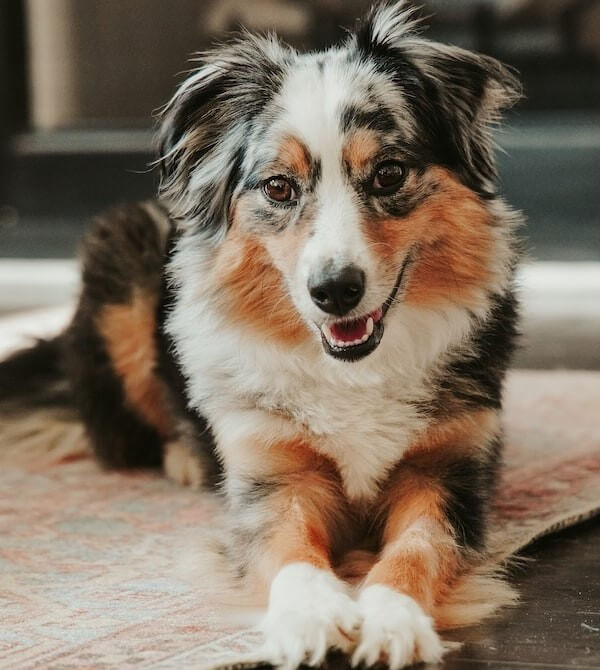
Mini Aussies are smaller versions of regular Australian Shepherds. The two don’t differ in much else. As to Australian Shepherd mini Shedding, mini Aussies are moderate to high shedders.
Do mini Australian Shepherds Shed as much as their larger counterparts? The answer is not quite. You see, the bulk of mini Aussie Shedding takes place during the spring and summer months. These canines don’t shed as much during the fall or winter.
The intensity of mini Australian Shepherd Shedding can vary, but it’s not as voluminous as regular-sized Aussies. One of the biggest reasons mini Aussies Shed less is their smaller size. They don’t have as much fur and produce less dander and hair fall.
Like most canines, mini Australian Shepherd Shed to stay cool. There isn’t much that pet owners can do to stop this natural occurrence. However, you can control miniature Australian Shepherd Shedding using the same tricks mentioned above for large Aussies.
Do Mini Australian Shepherd Shed a lot?
Do miniature Australian Shepherds Shed a lot? Mini Aussies are moderate to high shedders. Like the standard Australian Shepherd, the Mini Aussie experience regular shedding throughout the year and heavy shedding during the spring and fall seasons.
How much Do Mini Aussies Shed?
If you’ve been asking, “How much Do mini Australian Shepherds Shed?” you’ll be happy to learn they shed somewhat less than standard Australian Shepherds. Nonetheless, Mini Aussies still qualify as medium to high shedders, depending on the season.
Mini Australian Shepherd Shedding level
Like the standard Australian Shepherd, the Mini Australian Shepherds shed regularly all throughout the year. They become high shedders during the spring and summer months.
Mini Aussie coat care
Mini Aussie coat care doesn’t differ too much from standard Aussie coat care. Daily brushing for 10 to 20 minutes or three weekly sessions of the same time are an absolute must.
It’s essential to bathe these canines once every two months or sooner if they’re dirty. Finally, dog parents should opt for de-shedding combs during heavy shedding season to reduce the amount of loose hair falling off.
Mini Australian Shepherd coat stages
Mini Australian Shepherds have coat cycles similar to their larger counterparts. As puppies, Mini Aussies shed their puppy fur at the beginning of the fourth month. Their coats lose and grow new hair until their adult two-layer coat is ready at twelve months (or more).
Besides that, these canines go through moderate to high shedding cycles throughout the year. Mini Aussies shed more during the spring and summer season and shed less during the fall-to-winter cycle.
Do toy Aussies Shed?
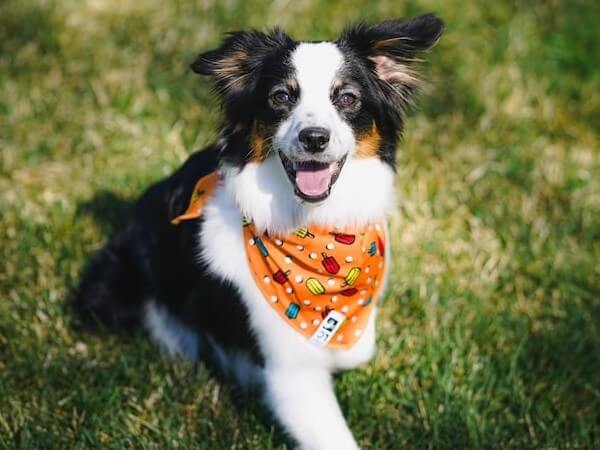
What about toy Aussies? Do toy Australian Shepherds Shed?
The answer is yes, toy Aussies do shed. Toy Australian Shepherd Shedding occurs throughout the year and they experience heavy shedding during the spring and fall seasons.
However, since they’re not as big as standard Aussies, their shedding output isn’t as high comparatively. You can’t do anything to control toy Aussie Shedding; however, a grooming regimen can help quite a bit in containing toy Australian Shepherd Shed.
Do Australian Shepherd Poodle Mix Shed?
The Australian Shepherd Poodle Mix (Aussiedoodle) is a very low-shedding dog. The Aussiedoodles get their almost hypoallergenic status thanks to their Poodle parentage. Aussiedoodles have a single coat and shed much less in comparison to their Australian Shepherd parent breed.
WANT MORE INFORMATION? Do Aussiedoodles Shed?
Do Australian Shepherds Shed more than Golden Retrievers?
Both the Australian Shepherds and the Golden Retrievers are high-shedding breeds. They go through normal shedding throughout the year but experience heavy shedding during the fall and winter months. That’s why it’s impossible to say which breed sheds more.
Do blue merle Australian Shepherds Shed?
Blue Merle isn’t a variation or a breed apart from Aussies. Blue merle is the term used to describe a particular coat color of the Australian Shepherds. That means Blue Merle Australian Shepherds shed just as much as the standard Australian Shepherds.
Do Border Collie Australian Shepherd mix Shed?
The Border Collie Australian Shepherd Mix is a double coat with medium to long fur. The Border Aussie is a heavy shedder and shed almost as much as Aussies.
Do Australian Shepherd Blue Heeler Mix Shed?
The Blue Heeler Australian Shepherd Mix has a short-hair coat and doesn’t shed as much as his Aussie parent breed. Owners of the Blue Heeler Australian Shepherd Mix report that this hybrid’s coat is extremely manageable from a grooming perspective and only require brushing once a week.
So, Do Australian Shepherds Shed?
We’re at the end of our guide and we hope you’ve had all your questions about Australian Shepard Shedding answered. As double-coat canines of medium-length hair, Aussies are heavy seasonal shedders. They also go through regular shedding throughout the year. But this hardly makes them unique in the canine world.
Dog parents can tackle Aussie shedding spells with a strict grooming routine and a few other preparations. It’s more about how much time and effort dog lovers can invest in their fur babies.
Related Questions
Australian Shepherd hair or fur are used interchangeably most of the time. However, experts and dog breeders will generally use the term ‘hair’ to signify a canine’s top coat with moderate-to-long hair strands. At the same time, fur is used for a dog’s denser and wool-like undercoat.
How bad does an Australian Shepherd shed? The answer is that it depends on who you’re asking. For instance, if you ask Akita owners how much Aussies shed, they’ll say not too bad. That’s because Akitas are the top shedders of the canine category. Nonetheless, Aussies can also be described as high shedders due to their double coats.
An Australian Shepard Shed is about as natural as humans losing hair due to the hair cycle. It’s a natural part of their physiology and shouldn’t be stopped. Still, dog owners can take preventive measures and utilize slicker brush and raking brushes to reduce shedding. De-shedding combs with blades work like magic too.
Yes, all Australian Shepherds shed to an extent. For instance, standard Aussies are heavy shedders, whereas Mini Aussies are moderate-to-high shedders. Australian Shepherd hybrid breeds like the Aussiedoodles are low shedders because they may carry the Poodle’s curly coat type.
Aussies are medium-to-high maintenance dogs. They have extensive grooming needs and are high-energy canines. They’re also highly intelligent, which means they need physical and mental stimulation. Aussies can be great companions and family dogs, but they need constant companionship as they don’t do too well being left alone.
Australian Shepherds are athletic canines who love exploring the outdoors. But they make ideal house dogs as well. As long as you give your Aussie ample attention and ensure his physical exercise and mental stimulation needs are met, he won’t give you much trouble.
DISCLAIMER: THIS WEBSITE DOES NOT PROVIDE MEDICAL ADVICE
The information, including but not limited to, text, graphics, images and other material contained on this website are for informational purposes only. No material on this site is intended to be a substitute for professional veterinary advice, diagnosis, or treatment. Always seek the advice of your veterinarian or other qualified health care provider with any questions you may have regarding a medical condition.
Resources:
https://australianshepherds.org/programs/usasa-health-genetics-program/
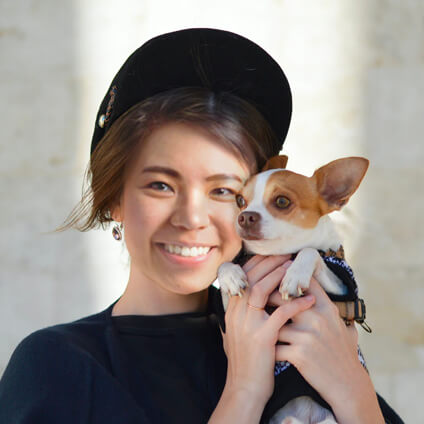
With over five years of specialized experience as an animal writer, my expertise lies in dog nutrition, health, behavior, grooming, and training. I am dedicated to delivering helpful and informative content that caters to the well-being of our furry friends. My primary goal is to empower pet owners with knowledge and ensure our canine companions thrive in health and happiness. In my free time, I love volunteering at local dog rescue centers.
